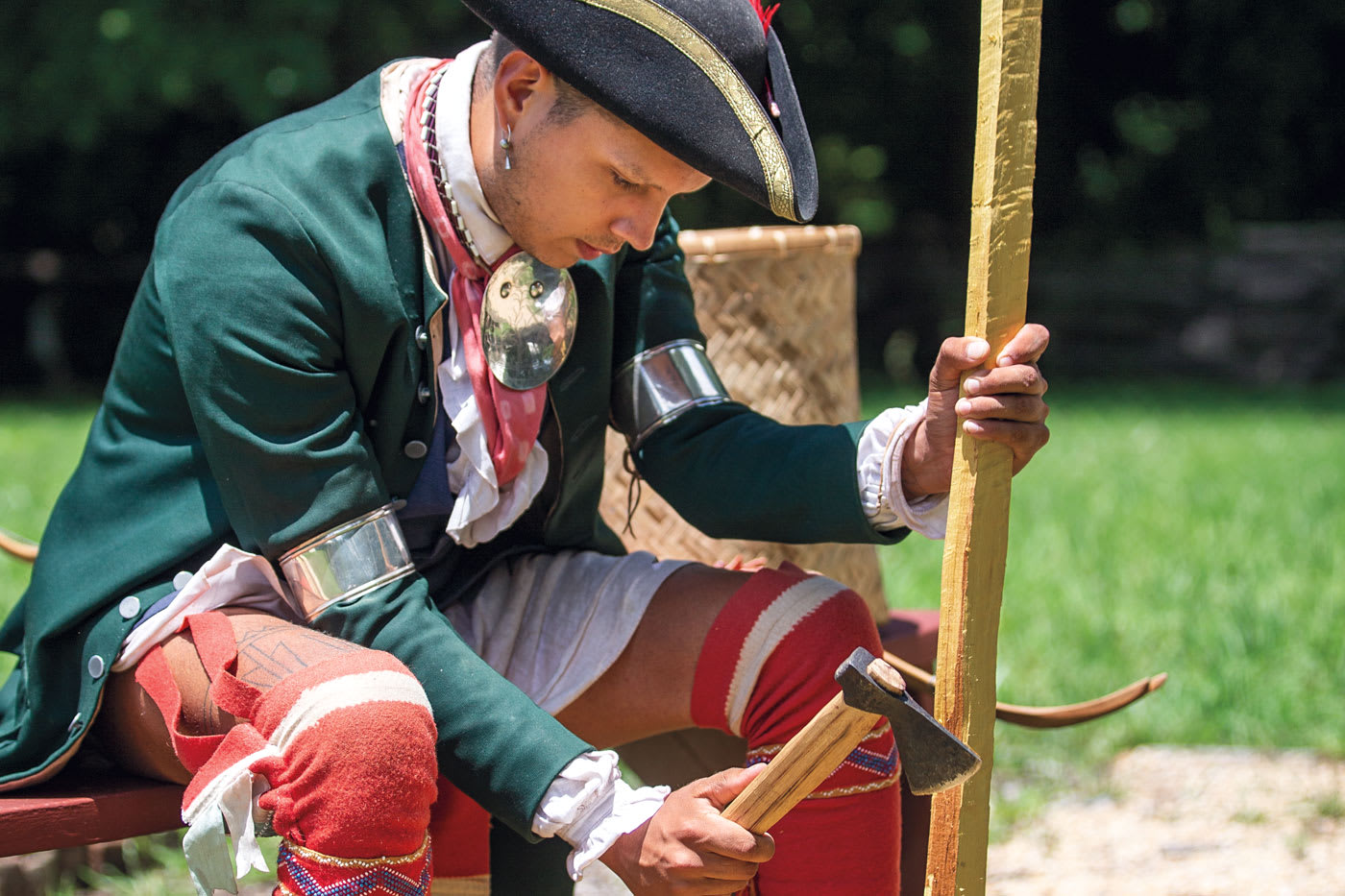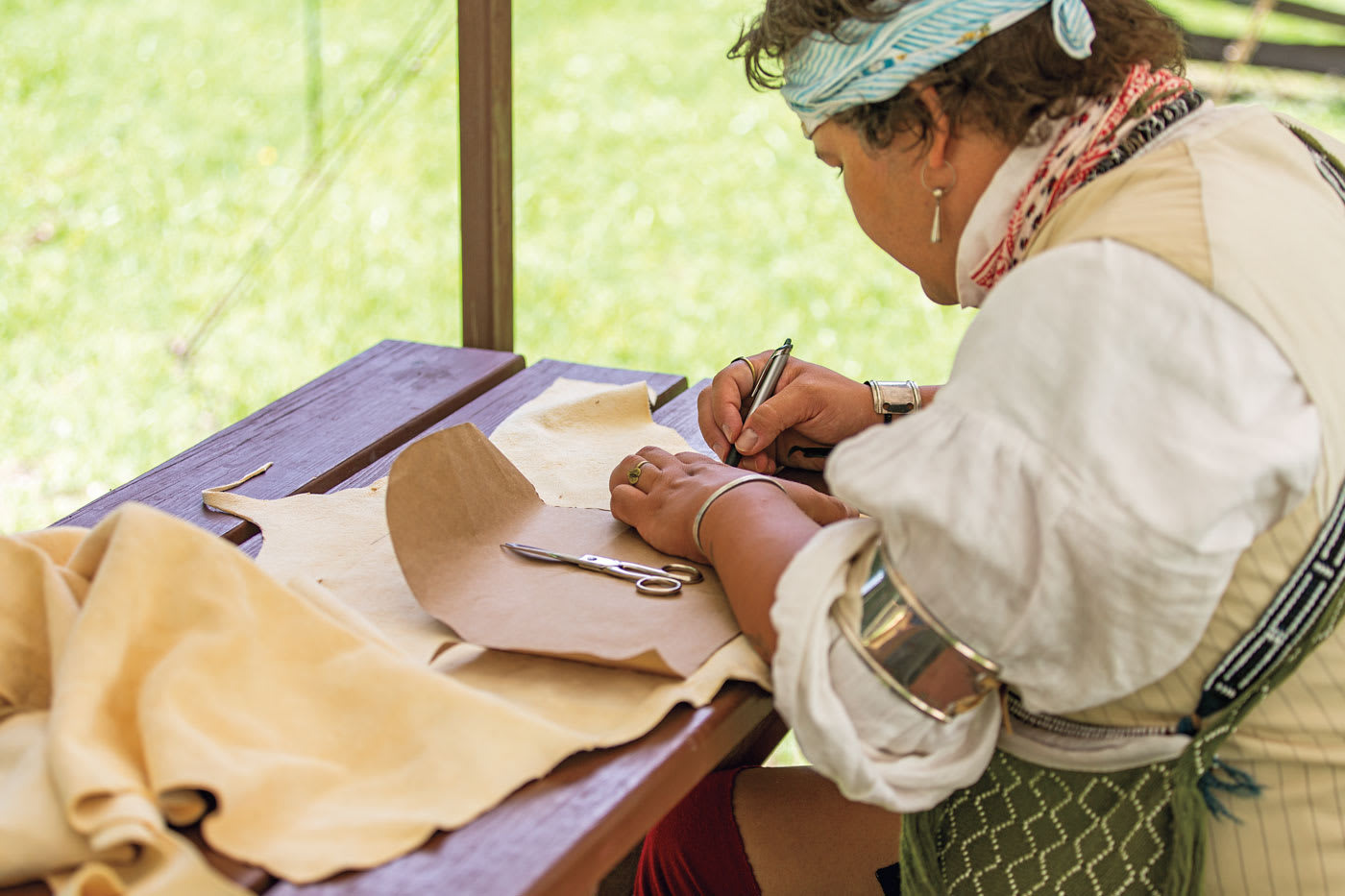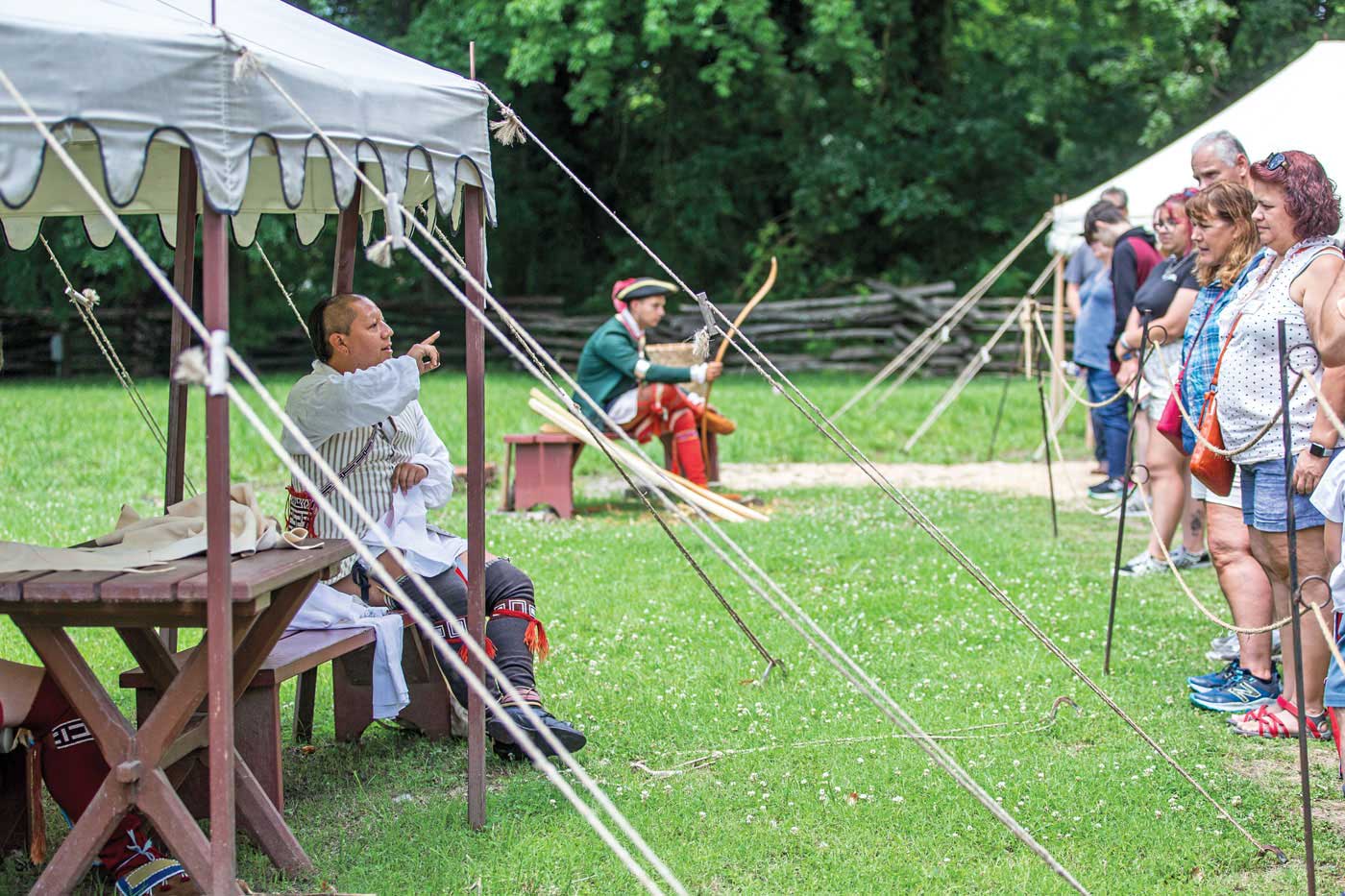Native Americans were a common sight around Williamsburg in the 18th century, interacting with colonists in a variety of ways. A new encampment in the Historic Area, located at the corner of Botetourt and Nicholson streets, gives interpreters a place to focus on Native American history and perspectives — and to integrate those perspectives into the interpretation of daily life in early Williamsburg.
“There are people who tell us they’ve come to Williamsburg for 30 years and never seen Native Americans here,” said Martin Saniga, the supervisor of American Indian Interpretation and a member of the Sappony tribe of North Carolina. “This [encampment] makes it easier to find us.”
In the 18th century, Native Americans tended to come to Williamsburg for three reasons. Some were members of local tribes who had signed treaties with the royal governor, making them subjects of the king, though they retained some autonomy because of their land agreements. They came to trade, just as white farmers outside the city did. Others came from farther away as part of delegations negotiating trade agreements. Still others were students at the Brafferton, a school for Native Americans at William & Mary.
“Seeing Indians here today is way more startling for some modern folks than it would have been for colonial folks,” Saniga said.
The site is not a Native American village. Rather, it represents encampments that colonial authorities set up for Native delegations that came to Williamsburg to negotiate with the royal governor. The visitors would have stayed in military-style tents like those at the site.

A Mix of Cultures
Interpreters at the encampment do not portray specific historic figures. They are 21st-century American Indians who offer a broad interpretation of Native American history and practices.
The new site allows Native Americans to demonstrate the types of craftsmanship their 18th-century forebears would have practiced. One afternoon, Saniga was making dress moccasins from a deer hide and decorating them with ribbons, glass beads, tin cones and metallic tape. The design was based on originals in Colonial Williamsburg’s collection. Chris Custalow, a Cherokee, was making colonoware, a type of hand-built, unglazed and undecorated earthenware made from local clays. Talon Silverhorn, a citizen of the Eastern Shawnee tribe of Oklahoma, was demonstrating techniques for making bows and arrows. By the late 18th century, bows and arrows were no longer weapons of war but were still used for hunting.
Though the goods made at the site demonstrate Native techniques and styles, they often incorporate European elements — as did much of what American Indians made in the late 18th century. The moccasins, for example, are made with silk ribbons. Composed of river clay mixed with shells or crushed pottery, the colonoware is formed and fired in a traditional fashion, but the resulting products are items that were popular among the English and the colonists, like cups, bowls and chamber pots.
Clothing, too, manifested both Native and European influences. Interpreters at the encampment routinely wear traditional leggings and breechcloth (strips of wool that go between the legs and over a belt) and blankets, but all are made of wool and other European-made fabrics, not furs or skins or other Native textiles. Custalow and Silverhorn sometimes wear gorgets around their necks. “Most traditional Shawnee gorgets are perfect circles,” Silverhorn said, “but the one I’m wearing is a crescent, which Europeans traditionally wore as armor.”
“Native fashion, like European fashion, changed over time,” said Saniga, who noted that Native Americans and Europeans had been in contact for many years and that many European ready-made goods were readily available.
Though the encampment has made it easier to demonstrate various aspects of their culture, Native Americans will continue to be seen all around town, just as they were in the 18th century. One new program will feature a Native trader whose horses will be loaded with goods. The trader will stop in front of various trade shops, further highlighting how American Indian and European cultures interacted.
Like the demonstrations and discussions at the encampment, new programs will reflect the extent to which American Indians were a part of daily life in 18th-century Williamsburg — a fact that is often surprising to Historic Area visitors. Saniga admits that’s frustrating. “But what’s most enjoyable and empowering about this job is having a stage where we can talk about our history,” he said.

The Peoples of Tsenacommacah
Before the English founded Jamestown in 1607, about 15,000 people lived in villages up and down the James, York, Mattaponi, Pamunkey, Rappahannock and Potomac rivers and tributaries. They represented about 30 tribes, collectively known to the English as the Powhatans. They called their land “Tsenacommacah,” which may have meant “densely inhabited land.”
Each tribe had its own “werowance,” or chief, the most powerful of whom in 1607 was Wahunsonacock, who took the name Powhatan. Many of the peoples, however, retained their own customs, dialects and governments.
Hunting and fishing were men’s work, and they used bows and arrows and clubs for the former and spears and fishhooks, as well as dugout canoes and nets, for the latter. Farming was women’s work, and these tribal farmers had more control over their lives than most Englishwomen.
The Powhatans sometimes interacted peacefully with Jamestown and sometimes clashed. Opechancanough, a successor of Wahunsonacock, led the last major attack on the English in 1644, and when that failed to dislodge the settlers, many residents of Tsenacommacah fled the region. A 1646 treaty made the tribes subjects of the English king. By the time Williamsburg became the capital of Virginia, the Native Americans who lived nearby came to town mostly to trade, though delegations from farther away came to negotiate with the royal governor.
Two tribal reservations that were created in the 17th century still exist in the region: the Mattaponi Indian Reservation along the Mattaponi River and the Pamunkey Indian Reservation on the Pamunkey River.
Editor’s Note
American Indian interpreters in the Historic Area use the terms “Native American” and “American Indian” to refer to Native peoples. “Native American” is sometimes used when discussing the pre-Revolutionary period.
